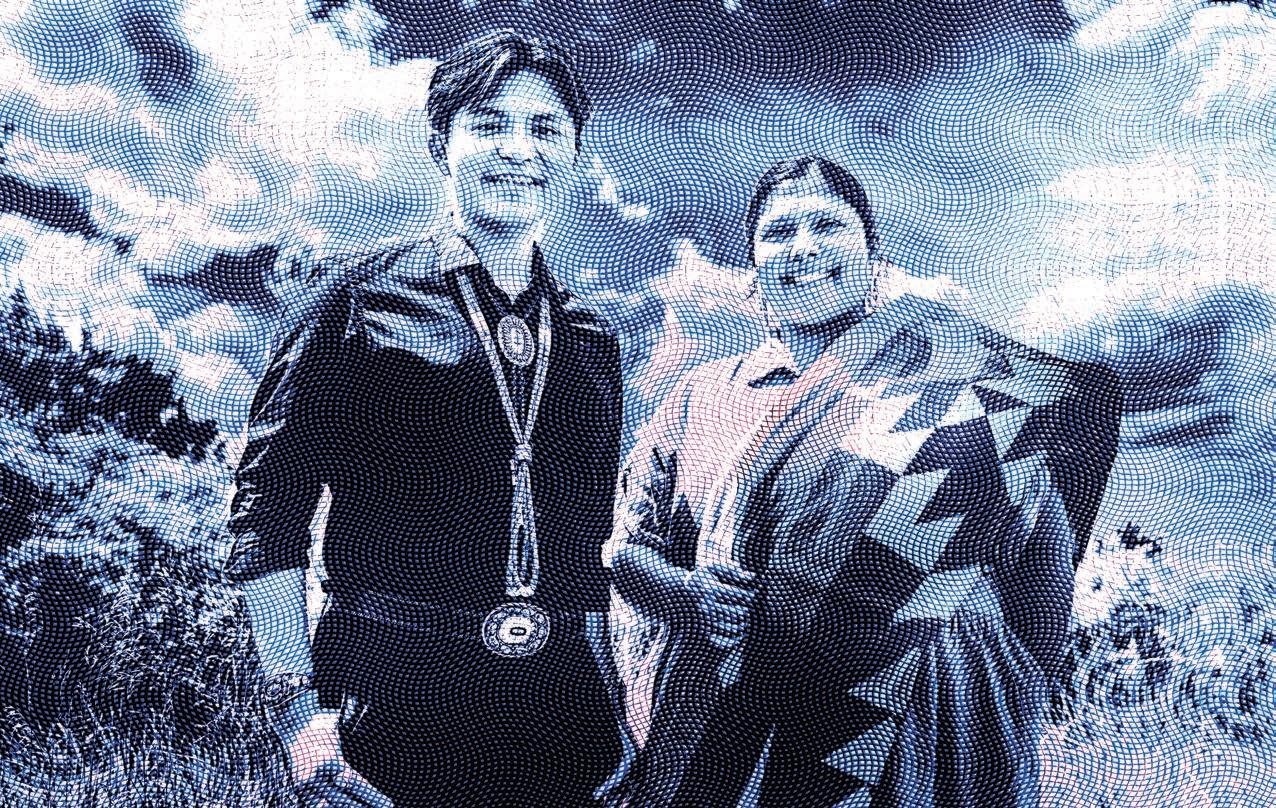

Ensuring College Access and Success for American
Indian/Alaska Native Students
Authored by Cheryl Crazy Bull
Series edited by Michele Siqueiros and Vikash Reddy, Ph.D. June 2024
Photo courtesy of the American Indian College Fund © 2024.
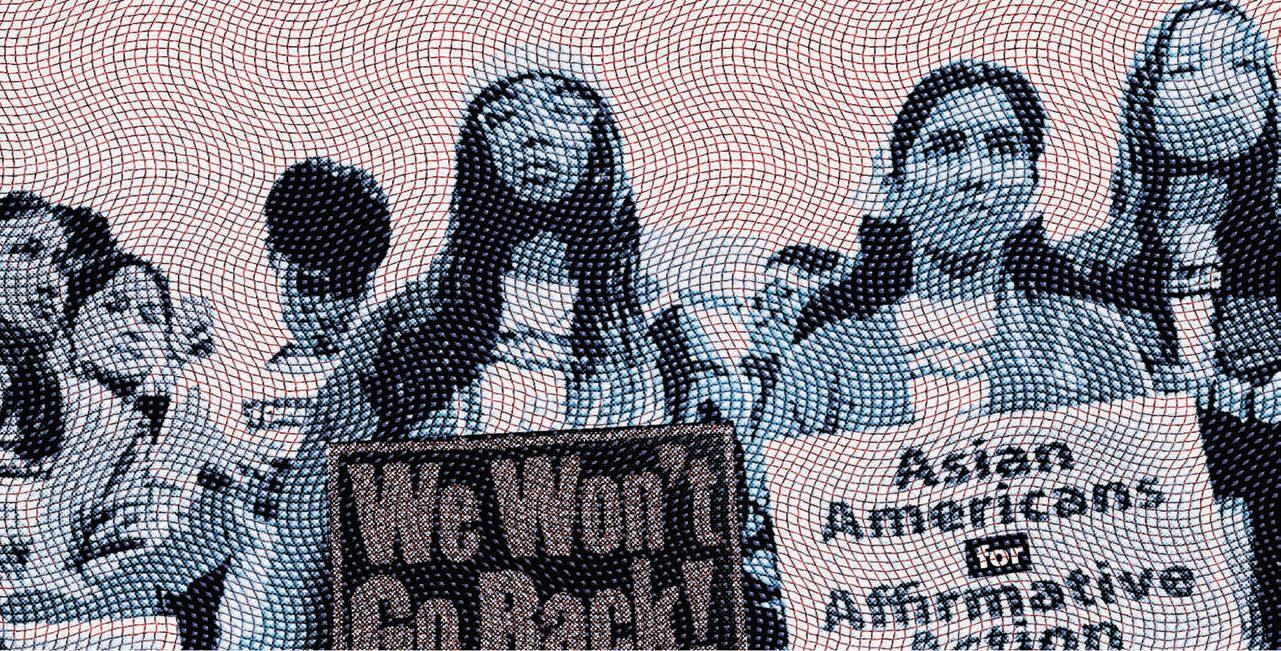
Preface

Over 50% of American students in our public schools are Latinx, Black, Asian American, Native Hawaiian and Pacific Islander (NHPI), or American Indian/Alaska Native (AIAN).
Tapping into their talent and ensuring their access to a college education is essential to our future economic power and the success of our multi-racial democracy. Despite the historical exclusion and current underrepresentation of many Americans in our colleges and universities, in June 2023, the Supreme Court of the United States severely curtailed the use of race in higher education admissions, prohibiting the consideration of an applicant’s racial status as part of that process.
Race-conscious admissions helped ensure America’s colleges and universities were more diverse. Without it, there is a greater urgency for college leaders and policy makers to review current practices for equity, and to identify solutions that provide a fairer approach to preparing students for college, admitting them, and supporting their success. Towards that aim, the Campaign for College Opportunity is releasing a series of briefs, including this one, as part of our Affirming Equity, Ensuring Inclusion and Empowering Action initiative. The series will elevate practices that support the college preparation, admission, affordability, and success of Latinx, Black, Asian American, NHPI, and AIAN students, ensuring America does not return to an era of exclusion in higher education.
2
Purpose of This Brief
The Campaign for College Opportunity has always been a champion of ensuring equal and equitable treatment of all students in higher education. We recognize the value and necessity of understanding the experience of diverse learners by disaggregating data to explore trends, opportunities, and challenges. More importantly, we seek to bring attention to the expertise, assets, and strengths of Americans from all backgrounds, while ensuring that solutions are targeted to support these same students. This is the first of four briefs within our national initiative that highlight specific practices to support AIAN, Latinx, Black, Asian American and NHPI students more equitably. This brief is tailored and informed by experts, best practices, and an authentic commitment to ensure that all American Indian and Alaska Native students can go to college and succeed without sacrificing or leaving their cultural assets behind. Additional briefs focused on Latinx, Black, Asian American, and NHPI students are forthcoming.
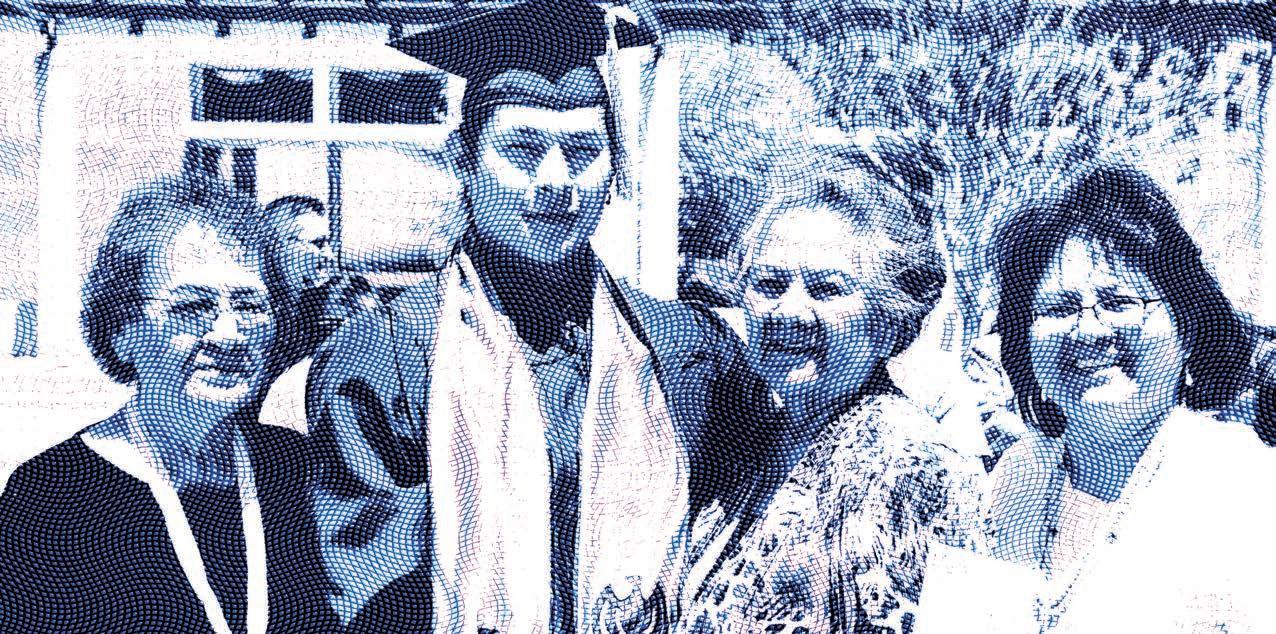
3
Photo courtesy of the American Indian College Fund © 2024.
Introduction
American Indian and Alaska Native peoples have been on a long and arduous journey in their quest for higher education. It is beyond the scope of this discussion to go back to the beginning of contact between Europeans and the Indigenous people of what are now the Americas to explore the myriad ways that colonizers used education as a harmful tool to undermine tribal identities and break down Indigenous social and familial structures. Children were removed from families, often living away from their communities for years and forced to abandon their cultural practices and languages, fostering generations of trauma that still impacts engagement with education.
The goal of education in the boarding school system that was in effect from the late 1800s to the early 1970s was assimilation and removal of children from the influence of Indian culture and family life. Access to higher education for Native people was limited.
But starting in the 1960s, Native American and Alaska Native tribes began a movement to establish and invest in tribally controlled colleges and universities (TCUs) that specifically serve Indigenous students and support their success. Their goal was the restoration of Native culture and identity and the revitalization of family and community life.
It is within the scope of this discussion to recognize that access to higher education, which has eluded Indigenous people for hundreds of years, can be remedied through a consistent, high-quality approach that honors Indigenous voices and visions. The tribal college movement recognizes that education is a resource and a remedy for Indigenous people that can bring restoration and repair.
In addition to describing promising practices that increase access to higher education for Native students, this paper affirms the unique political status of American Indians and Alaska Natives as the foundation for increased investment in inclusive higher education practices. American Indians and Alaska Natives are citizens of sovereign nations, as well as U.S. citizens. While often treated like a racial group, the recognition of tribes as pre-existing sovereigns over which states have historically lacked authority is well-established through treaties between tribes and the U.S. and through federal legislation and court cases.
For discussion in this report, the terms American Indian, Alaska Native, Indigenous, tribe and Native are used interchangeably and are intended to cover members or citizens of tribal nations located within the boundaries of what is now the U.S. Native people prefer to be recognized and usually self-identify by their specific tribal citizenship. For the sake of brevity, the use of the acronym AIAN is intended to be inclusive of both American Indians and Alaska Natives.
4
The U.S. Supreme Court found in Morton v. Mancari (1974) that Indian Preference relative to employment within the Bureau of Indian Affairs (BIA), a federal agency, did not constitute racial preference, but rather “an employment criterion designed to further the cause of Indian self-government and to make the BIA more responsive to the needs of its constituent groups.” Indian Preference refers to giving AIAN applicants preferential consideration within the employment screening and hiring process when all other qualifications are similar.
The court also said, “As long as the special treatment of Indians can be tied rationally to the fulfillment of Congress’ unique obligation toward Indians, such legislative judgments will not be disturbed.”
Understanding the history of tribal self-determination and the unique obligation of the U.S. toward Indians offers an opportunity for — and a basis for investing in — the strengthening of college and university recruitment, admissions, and retention programming for AIAN students.
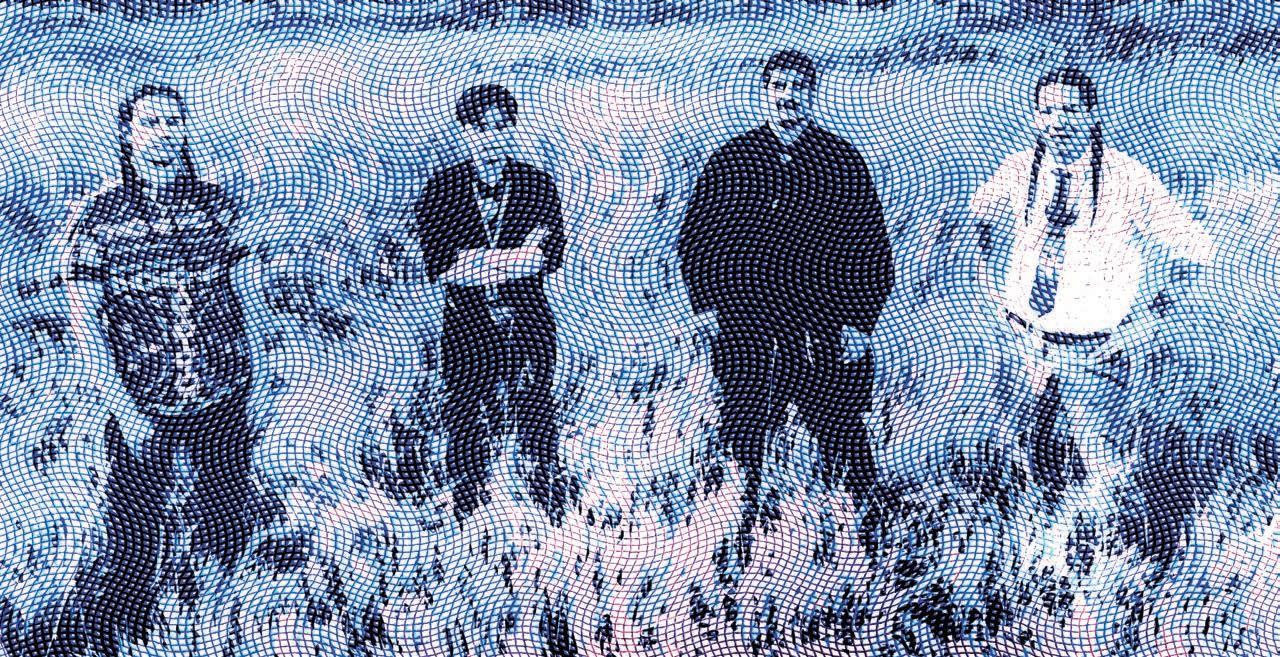
5
Photo courtesy of the American Indian College Fund © 2024.
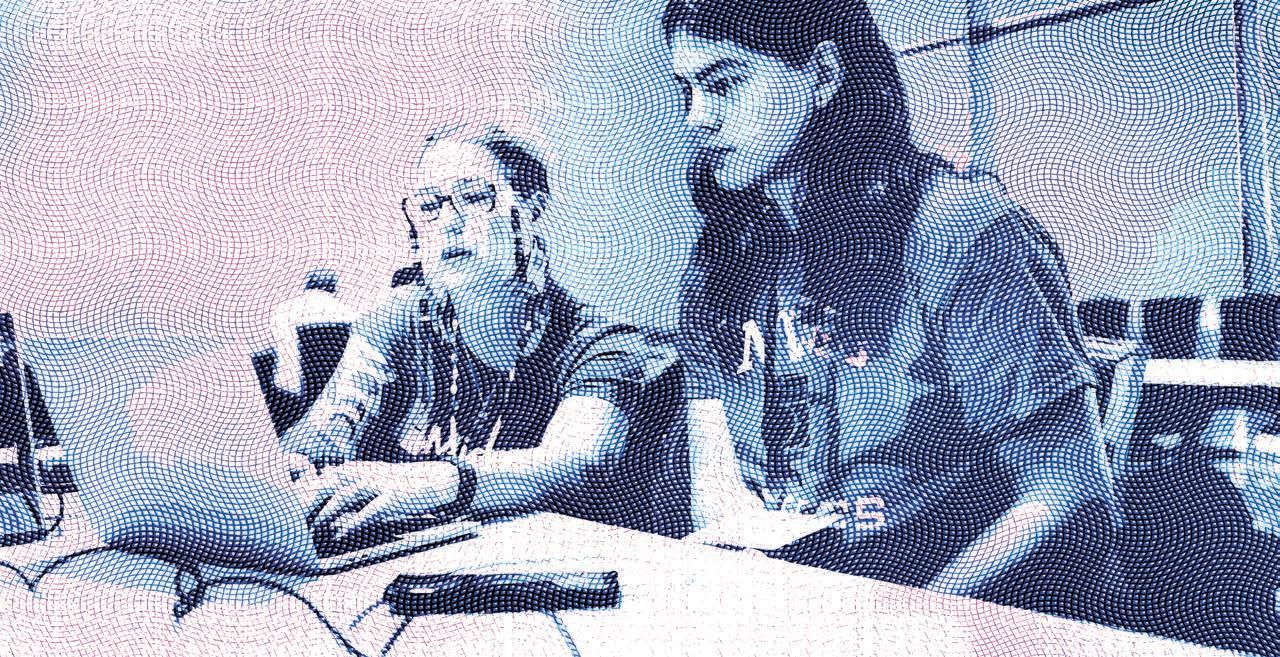
The State of Higher Education for the American Indian and Alaska Native Population
The U.S. 2020 Census revealed a significant increase in the AIAN population: Persons identifying as American Indian or Alaska Native in combination with other identities reached an all-time high of over 6.6 million people, while those identifying as American Indian or Alaska Native alone comprised a total of nearly 2.3 million people. This was a significant increase from the 2010 Census count of 3.4 million people who identified as AIAN with additional identities and two million people who identified as AIAN alone. About 27% of AIAN people are under the age of 18, making advocacy for inclusive educational opportunities even more important. Incorporating Native people’s history, contemporary experiences, and cultural knowledge into curriculum, improving teaching practices to consider socio-economic, emotional, and spiritual characteristics of Indigenous students and their families, and building stronger community and family engagements all foster more inclusive education.
6
Photo courtesy of the American Indian College Fund © 2024.
Nearly one in four (24%) AIAN residents have enrolled in college without completing a degree.
Figure 1. Educational Attainment in the United States by Racial/Ethnic Background, Ages 25-64.
Bachelor’s degree or higher
Associate degree
Some college, no degree
HS or equivalent
No high school diploma
*NHPI: Native Hawaiian and Pacific Islander
Source: US Census Bureau. (2024). American Community Survey, Five Year Estimates 2019-2023, Public Use Microdata Sample.
Only one in six (16%) of AIAN people between the ages of 25 and 64 has a bachelor’s degree, compared to 33% for the rest of the U.S. population. Socio-economic conditions impact post-secondary participation. The unemployment rate on some reservations served by TCUs can be as high as 80%. Further, the Census data showed that the AIAN population had a poverty rate of nearly 30%, more than twice that of the U.S. population.
7
LatinxBlackAsian*NHPI AIAN Multiracial OtherWhite American
26% 29% 18% 7% 20% 10% 31% 24% 9% 25% 9% 13% 11% 6% 61% 11% 36% 24% 9% 20% 14% 35% 26% 10% 16% 7% 22% 23% 10% 38% 10% 22% 19% 9% 40% 5% 24% 20% 10% 40%
Only three out of four (74%) AIAN students were supported to earn a high school diploma within four years of enrolling in high school.
Figure 2. Adjusted Cohort High School Graduation Rate by Race/Ethnicity, 2021-2022.
Source: National Center for Education Statistics. (2024). High School Graduation Rates. Condition of Education. U.S. Department of Education, Institute of Education Sciences.
American Indian/Alaska Native students have the lowest rate of high school completion of any demographic group in the United States, and AIAN students graduate from high school at the lowest rate among all populations tracked by the National Center for Education Statistics (NCES). Among workforce-aged adults, 14% of Native people have not been supported to earn a high school diploma. NCES data tracking high school graduation rates shows the adjusted rate for 2021-22 was 74% for AIAN students, compared to 87% for the general student population. High school graduation rates for AIAN students can be as low as 50%, particularly in reservation settings and in some states where there are significant socio-economic challenges, including a lack of housing, health care, jobs, and transportation.1
Although there is limited data available about AIAN student college readiness, an understanding of how AIAN participate with college readiness programming can be critical to creating pathways in partnership with schools and families so transitions to college are more likely to be successful.
8
Latinx All Black Asian American AIAN White 87% 83% 81% 74% 90% 94%
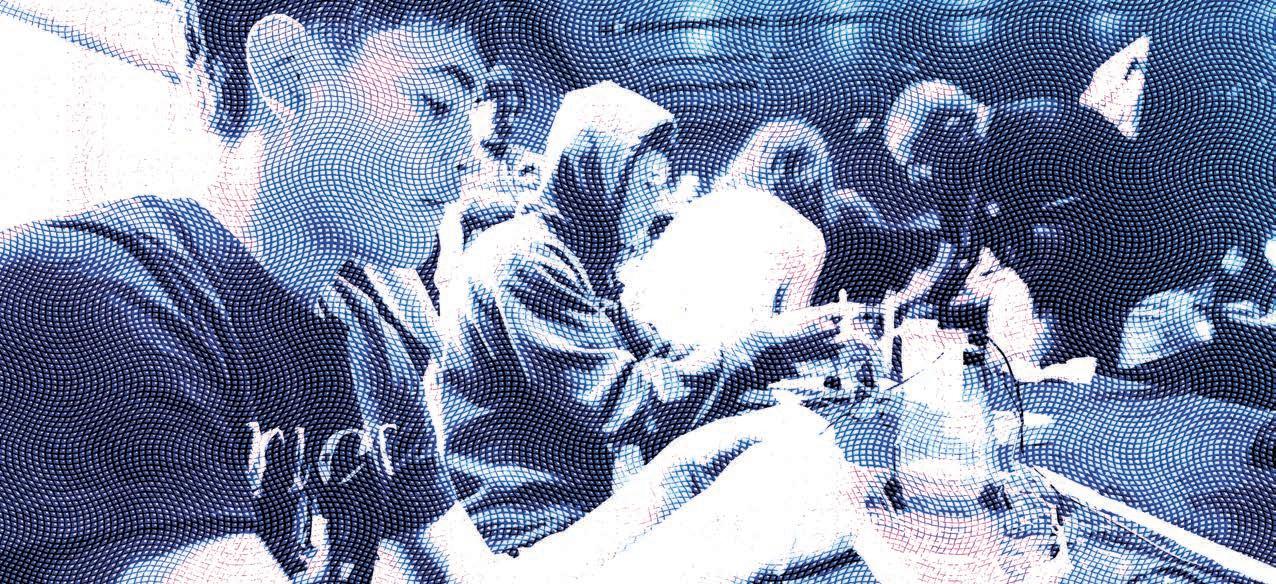
Access to high school curricula that includes college prep and Advanced Placement (AP) courses can also be a factor in college readiness.2 According to the College Board, only 51% of AIAN students have access to AP courses, the lowest of all students in data disaggregated by race and ethnicity.3 The ACT Center for Educational Equity report, “The Condition of College and Career Readiness 2015: American Indian Students,” describes the readiness of AIAN students based on several criteria, including ACT test scores and comparisons to ACT benchmarks in subject areas. Overall, AIAN students did not perform as well as other students.4
Seventy-seven percent of AIAN students attended public institutions, such as state land-grant institutions and community colleges, and 11% attended TCUs.5 According to a study by the Center for Economic Security and Opportunity at Brookings, 13% of first-year enrollment of Natives was at selective institutions of higher education, while 83% was at minimally selective/open enrollment four-year and two-year institutions (the remaining 4% attend forprofit institutions).6 Native students benefit from programs and resources targeted at building college-going knowledge, college readiness, career advising, and transfer programming.7 While tuition waivers and subsidies are useful, Native students need resources that help them meet their basic needs for housing, food, health care, childcare, and transportation.8
9
Photo courtesy of the American Indian Science and Engineering Society © 2024.
Only 28% of AIAN young adults are enrolled in college or graduate school, the lowest level among all groups we examine.
Figure 3. College Enrollment Rates, 18-24-Year-Olds, by Race/Ethnicity, 2021.
Source: National Center for Education Statistics. (2024). Percentage of 18- to 24-year-olds enrolled in college, by level of institution and sex and race/ethnicity of student. Digest of Education Statistics.
Consequently, the participation of Native youth in higher education is significantly less than that of the rest of the U.S. population, having decreased substantially over the last 10-15 years, from 41% of AIAN 18-24-year-olds enrolled at either the undergraduate or graduate student level in 2010 to 28% in 2021.9 The NCES 2023 trend analysis showed that undergraduate enrollment of AIAN students has declined 40%, from 179,091 to 107,013 over a similar period.10
10
Asian American AIAN *NHPI White
Latinx All Black
0% 20% 40% 60% 80% 38% 61% 33% 37% 28% 45% 38%
*NHPI: Native Hawaiian and Pacific Islander
Public community colleges support only one in four (27%) of AIAN students to graduate within three years of enrollment.
Figure 4. Three-Year Cohort Graduation Rates at U.S. Community Colleges by Race/Ethnicity, Students Enrolling 2019.
Source: National Center for Education Statistics. (2024). Integrated Postsecondary Education Data System.
The data on Native student achievement also shows that our colleges and universities must do more to support AIAN students after they have enrolled in college. Figure 4 shows that only about a quarter (27%) of AIAN students attending public community colleges are supported to earn an associate degree within three years. Graduation rates for AIAN students at independent, nonprofit two-year colleges are much higher, but AIAN student still see the lowest levels of support among all populations examined.
11
*NHPI: Native Hawaiian and Pacific Islander
Public Community Colleges Two-Year Independent Nonprofit Two-Year Private For-Profit Latinx Black Asian American AIAN *NHPI White Two or More 0% 20% 40% 60% 80% 100% 27% 61% 62% 21% 46% 45% 42% 68% 86% 23% 50% 52% 27% 51% 44% 27% 51% 48% 36% 62% 66%
Public colleges and universities in the U.S. support only a third of AIAN students to complete a degree within six years.
Figure 5. Six-Year Cohort Graduation Rates at U.S. Four-Year Colleges and Universities by Race/Ethnicity, Students enrolling in 2016.
Support for Native students enrolled at four-year colleges and universities must also be improved. At public institutions, only a third (37%) of AIAN students are supported to earn a degree within six years. AIAN students at independent, nonprofit colleges and universities have a graduation rate of 46%. This means more than half of all Native students who enrolled were not supported to earn a college degree after six years.
12
*NHPI: Native Hawaiian and Pacific Islander
0% 20% 40% 60% 80% 100% 52% 52% 63% 42% 31% 46% 74% 70% 83% 44% 45% 56% 37% 36% 46% 55% 39% 66% 63% 45% 72%
Public Four-Year Four-Year Independent Nonprofit Four-Year Private For-Profit Latinx Black Asian American AIAN *NHPI White Two or More
Source: National Center for Education Statistics. (2024). Integrated Postsecondary Education Data System.
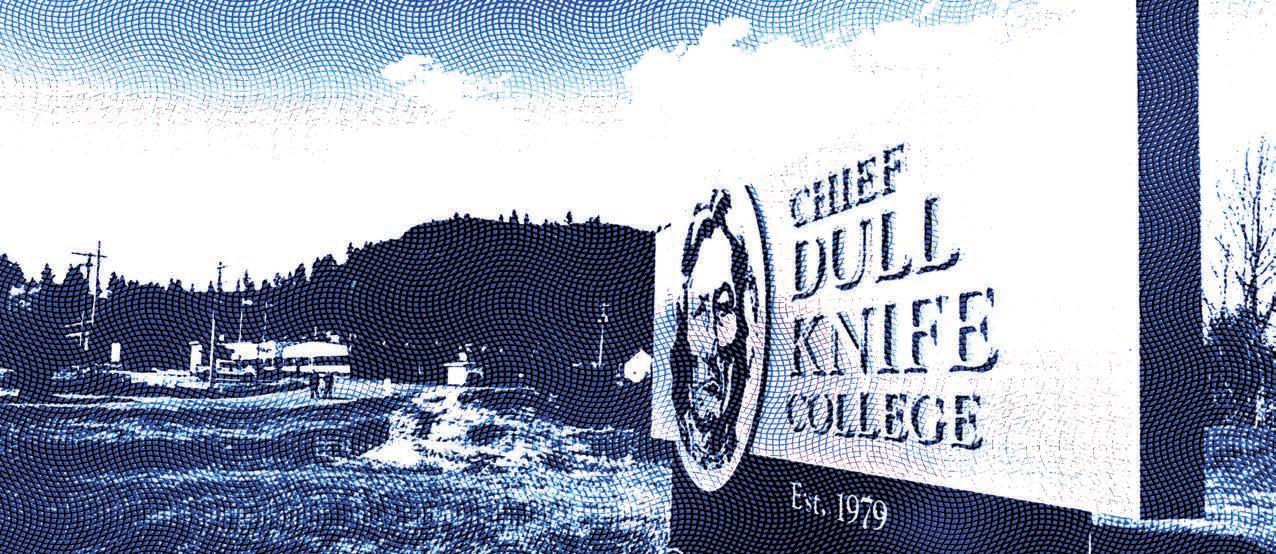
Institutions Serving American Indian and Alaska Native Students
This discussion considers policy implications for the federal government, states, and institutions, as well as policy that is inclusive of the role of tribal nations operating as sovereign governments that can influence educational participation and attainment through their advocacy.
It is also important to acknowledge that the lack of understanding among policymakers, and higher education institutions about the political status of Natives does impact their investment in Native students. It also increases the likelihood that Native students will not feel visible or have a sense of belonging, especially at predominately white institutions.11 Advocacy and education, such as that provided by this brief, are valuable resources.
According to the American Indian Higher Education Consortium (AIHEC), enrollment of students at TCUs in 2020 was just over 15,200, with over 79% of these enrollees identifying as AIAN.12 So approximately 11% of Native students attend one of the 34 TCUs. The AIHEC also noted that 17% of TCU students are white or Hispanic. Students in this category are attending TCUs because these schools provide access to higher education in rural areas and are more affordable than other colleges and universities.
13
Photo courtesy of the American Indian College Fund © 2024.
Native American-Serving Nontribal Institutions (NASNTI) are institutions with Native student enrollment of at least 10% and are not TCUs. This recognition through federal legislation is based on selfidentified AIAN students. Access to specific federal funding comes with that designation. In 2020, there were thirty-seven institutions designated as NASNTI that had a combined Native student population of approximately 14,800 within a total population of 78,000 students enrolled in two- and four-year institutions. Around 12% of Native students attended those institutions, the majority which are in Oklahoma and in the Southwest’s Four Corners region, which consists of the southwestern corner of Colorado, the southeastern corner of Utah, the northeastern corner of Arizona, and the northwestern corner of New Mexico.
TCUs have unique missions concerning both cultural revitalization and tribal economic and community development. The first TCU was founded in 1968 by the Navajo Nation, and over the last 55 years, more TCUs have emerged throughout what is called Indian Country. Indian Country is a term used to cover areas of the U.S. where tribal nations still reside on lands, including reservation and rural lands, which were set aside by the federal government for their use. Over 80% of Indian Country is served by TCUs. Of the thirty-four members of AIHEC, 29 are tribally chartered institutions, established under the governing authority of their founding tribes. The remaining five include two institutions operated by the Bureau of Indian Education (an agency within the U.S. Department of the Interior), one federally chartered institution, and two institutions originally established as workforce training centers that are now also academic institutions.
All TCUs have dual missions of educating a workforce and restoring and revitalizing tribal knowledge and cultural practices. All are designated land-grant schools that offer certificates and associate degrees, over half of them offer bachelor’s degrees, and several offer graduate degrees, including a doctorate in Diné studies offered by Navajo Technical University. TCUs are primarily funded through federal legislation that provides operating support, tuition, and fees, as well as by federal and private grants.
TCUs are experts at recruiting and educating Native students. Besides their emphasis on culturally relevant education and the likelihood that many of their employees, including faculty members, will be Native, their familiarity with students’ experiences creates a welcoming, asset-based, familyengaged environment. A 2019 study by Gallup Purdue of the alumni of tribal colleges showed among respondents that TCU graduates scored higher in all areas of well-being (physical, community, financial, social, and career) than Native students attending other institutions and than college graduates of any race, in general.
14
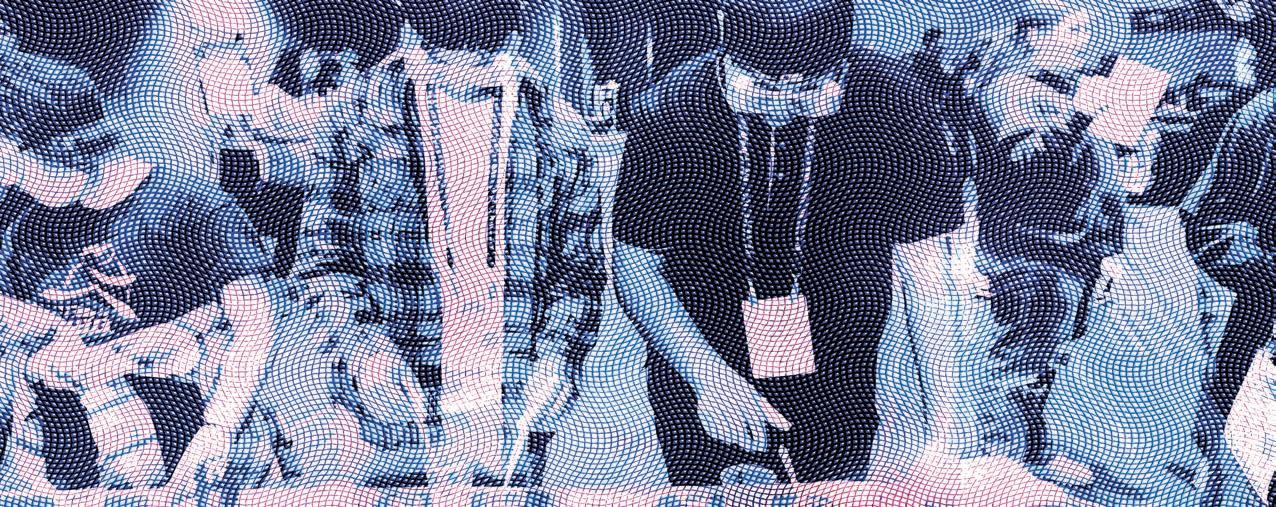
It is also worth noting that the development of TCUs occurred at the same time as widespread commitment to civil rights and community-driven programs under the Great Society programs of Presidents Kennedy and Johnson. The development of Native studies degree programs and student support services at mainstream institutions occurred around the same time, thus linking the selfdetermination goals of tribal higher education across the various institutions that Native people attended.
Many higher education institutions intentionally build programming for Native students and create strong working relationships with tribes. Often this includes the creation of a senior staff position for a person who will serve as a liaison between tribes and the institution, creating transparent communications and greater opportunities for investment in both students and tribal priorities.
As previously noted, Native-serving nontribal Institutions are federally designated and based on student enrollment, whereby they certify at least a 10% headcount of AIAN students. Funds must be used to promote the achievements of Native students, including programs that provide healing and wellness resources, integrate cultural knowledge into academic programming, and other related services.
15
Ensuring College Access and Success for American Indian/Alaska Native Students • The Campaign for College Opportunity • June 2024
Photo courtesy of the American Indian Science and Engineering Society © 2024.
Opportunities for and Barriers to American Indian and Alaska Native Success in College
The size of the total AIAN population in comparison to other groups, along with the challenges associated with socio-economic characteristics, means that Native people are frequently left out of data. It can be challenging to gather useful information when there are inadequate practices in place to support identification of Native citizenship and when there is insufficient investment in research and analysis. This is true for all aspects of Indigenous life, including housing, health care, food security, and transportation access. For this discussion, the sources of data on educational success, promising practices, and policy are limited. There is a widespread lack of disaggregated data that makes it even harder to explore ways to improve AIAN higher education.13 Primary sources for national data are the U.S. Census and the NCES. Research exploring successful or promising practices, especially focused on the impact over time of strategies such as tuition waivers/subsidies, student academic and social supports, and the value of tribal nation engagement, is often treated with what Native people call the “asterisk”— AIAN people are footnotes because of a failure by higher education institutions, government agencies, and academic researchers to invest in longitudinal or targeted studies or to use methodologies that provide useful data.
Disaggregating data, using inclusive methodologies, and investing in existing and emerging research capacity is critical to improving AIAN higher education access. The National Native Scholarship Providers (NNSP), which includes the American Indian College Fund, the American Indian Science and Engineering Society, Native Forward Scholars, and Indigenous Education Inc. (which administers the Cobell Scholarship Program), have organized to support increased research and data analysis by creating data sets made up of the Native student populations served by their organizations. In 2023, the NNSP released a study of college affordability for Indigenous students using a mixed methods strategy in which current and former scholarship recipients were surveyed about college. Their responses were helpful both in framing their experiences as AIAN students and in providing a foundation for policy recommendations.

16

KEY FINDINGS OF THE NATIONAL NATIVE SCHOLARSHIP PROVIDERS STUDENT SURVEY:
• 72% of current AIAN scholars ran out of money at least once in their prior six months of college
• 67% of current AIAN scholars contribute to paying family bills
• 30% of former AIAN scholars said lack of adequate financial support in their first year of college contributed to their difficulty with decisions about continuing their education and about what major to choose
• 48% of former AIAN scholars accrued debt greater than $5,000 for college and living costs during their college years
There are numerous journal articles, literature reviews, and dissertations that provide insights into Natives and higher education. Sharing resources such as those listed here through research data bases, institutional and organizational websites, and through conferences and presentations, gives access to a broader audience ensuring the use of this information in decision-making and resource allocation:

• Proven practices and opportunities for inclusive programming focused on AIAN students
• Comprehensive information about TCUs
• Practices that improve faculty members’ experiences and abilities to educate AIAN students
• Studies of community colleges and mainstream institutions and their support of Native students
17

Innovations and Best Practices
The Importance of Belonging and Why Native Students go to College
Native students share that they have two primary motivations for going to college: to learn to better their communities and to use their knowledge to give back. These goals honor the communal nature and commitment to responsibility inherent in tribal cultural knowledge and ways of being.14 Fostering Native students’ connection to family and their ability to continue to fulfill their cultural and relationship responsibilities helps with both recruitment and retention. Much of the research about Native student college success emphasizes that the ability of an institution to create a climate grounded in relationships, identity, representation, and access to home communities significantly contributes to Native student college success.
18
Photo courtesy of the American Indian College Fund © 2024.

Even before an institution welcomes AIAN students, campus climate and the culture of the institution should be ready for these students and their unique needs. The American Indian College Fund’s declarations on Native student higher education inclusion and success provides a blueprint for institutions to create campuses where AIAN students experience belonging. The report, “Creating Visibility and Healthy Learning Environments for Native Americans in Higher Education” declares the following:
• We believe that Native American students have a right to a higher education and to attend any college or university of their choice.
• We believe that colleges and universities have the duty to recognize and acknowledge that college campuses reside on the original homelands of Indigenous peoples.
• We believe that colleges and universities have the duty to incorporate Indigenous knowledge for Native students to survive and thrive.
• We believe in the inherent right of all Native students to have a place on college campuses that fosters their sense of belonging and importance in their campus community.
• We believe that colleges and universities have a duty to make visible, to advocate for, and to empower Native students’ degree attainment.
• We believe that colleges and universities have a duty to cultivate an ethic of care in supporting Native peoples by listening, learning, and engaging with Native students, staff, and faculty.
• We believe that senior leadership at higher educational institutions must make a commitment to do system-level work that benefits Native students’ college degree attainment.
• We believe that colleges and universities have the responsibility to uphold tribal sovereignty by generating meaningful government-to-government relationships with tribal nations and tribal colleges and universities.15
There are promising and proven practices that affirm each of these declarations as vital to all aspects of Native students’ post-secondary experience.
19

College Horizons, a nonprofit established in 1998, is a 501(c)(3) organization designed to familiarize students with campus and college experiences, particularly at more selective institutions. With a vision of removing barriers to college admissions by providing college counseling and academic advising, helping institutions connect with Native students’ experiences, and building partnerships with colleges and universities, College Horizons has a 99% college admissions rate among its more than 2800 participants, with 85% college completion within five years. Its success is deeply rooted in helping promising students understand how to get into college, access financial aid, and navigate familiar challenges such as homesickness and a lack of knowledge about community resources.
Native Pathways is an American Indian College Fund program designed to help AIAN students and their families understand what opportunities and resources exist for their college journeys. Established in 1989, it supports scholarships, student success resources, and TCUs. In 2016, the College Fund expanded outreach to work with dozens of high schools, tribal colleges, and mainstream institutions, as well as with school counselors and families, to introduce college as an option, to support students’ understanding of the postsecondary experience, and to help families overcome uncertainty about and lack of familiarity with college. Through regranting to provide support for activities, the College Fund’s Scholars Pathway Program over a recent two-year period impacted around 3,500 AIAN students access to college advising via workshops, webinars, and one-on-one interactions, which led to significant increases over time in students’ completion of the FAFSA and of applications for scholarships.
According to the National College Access Network, “Completion of the Free Application for Federal Student Aid (FAFSA) is one of the best predictors of whether a high school senior will go on to college. Seniors who complete the FAFSA are 84% more likely to immediately enroll in postsecondary education. For students in the lowest socioeconomic quintile, FAFSA completion is associated with a 127% increase in immediate college enrollment.”16 The College Fund’s Native Pathways college readiness program reports a 70% FAFSA completion rate among high school students who use its resources, with over 50% of them enrolling in college after graduation.
Tribal nations are also engaged in programs that provide support for high school students and adults to navigate post-secondary education. An example is the Chickasaw Nation, which provides students with financial assistance beyond college tuition and fees to include housing, utilities, living expenses and remedial education. Its program includes providing college campus tours for high school students, special resources for college internships, and funds for students who are pursuing academic programs that require licenses or certifications.
Many higher education institutions address the need for better AIAN representation and visibility on campus by offering courses in Native studies, and they also create a stronger sense of belonging for Native students by providing specific spaces for them to live and gather. Actively recruiting Native faculty and student services staff members, as well as diversity training and cultural education throughout an institution, are ways to help AIAN students form relationships that are critical to navigating their daily lives at college.
Several colleges and universities have employed a variety of successful strategies to create campus support for AIAN students. From Arizona State University’s Turning Points Magazine, the first-ever Native college magazine written by Native students for Native students; to the University of South Dakota’s Native Heritage events, which bring alumni and the campus community together to celebrate Native people; to the creation of an Afro-Indigenous research guide in The Ohio State University library system, institutions are finding ways to build relationships and visibility for AIAN students. Across the U.S., many higher education institutions are building Indigenous gathering places and bringing together public and private resources to create opportunities for research with Native communities and students and delivery of educational activities such as place-based or virtual courses increasing access for remote students.
According to the National Association of Student Personnel Administrators’ (NASPA) Center for Firstgeneration Student Success, 67% of Native students attending TCUs or Native-serving institutions are first-generation college students. First-generation students benefit from early engagement with academic advisors and admissions counselors. There are AIAN student-oriented programs currently underway that are available for further study. For example, the state of Arizona’s Tribal College Dual Enrollment Program provides up to $600 or twelve credit hours to high school students who enroll in one of the state’s three tribal colleges. The program went into effect in fall 2022 and is a promising practice that can increase tribal students’ college engagement.
21



There are seven tribal colleges in the state of Montana, as well as eight community colleges. The Montana University System has established an accessible set of transfer resources and articulation agreements among their institutions to benefit TCUs and other community colleges. Articulation agreements also exist that support the transfer of students from two-year tribal college academic programs into four-year programs. In addition, an advisory group of transfer experts hosted by the American Indian College Fund is developing a transfer course for use by bachelor’s degree-granting institutions to improve student transfer experiences.
In fall 2022, the University of California implemented a systemwide tuition waiver for state residents who are members of federally recognized tribes (109 tribes). This waiver’s value is approximately $14,000. The state of California also appropriated funds to community colleges for the purpose of improving Native student success.
A cohort project at the Western Interstate Commission for Higher Education (WICHE) examined best practices for improving Native student enrollment and retention at schools designated as NASNTI. A report explored these promising NASNTI-identified practices, which included experiential learning such as place-based institutes and community service, shared learning communities, and increased engagement not only with students, but also with their families and communities.
These institutions use the funds provided by congressional appropriations to support the unique needs of Native students. According to a survey of 17 of the NASNTI conducted by WICHE, the leading choices for supporting AIAN students were providing course/degree pathways support, as well as student success activities, such as participation with Complete College America. For example, the Utah State University system’s Blanding campus uses resources to provide Native first-time college students with targeted cultural resources and addresses the critical need for Native students to learn money management through financial literacy programming. The school’s summer internship program provides AIAN students with direct research activities in a laboratory to affirm students’ interest in STEM fields.
22
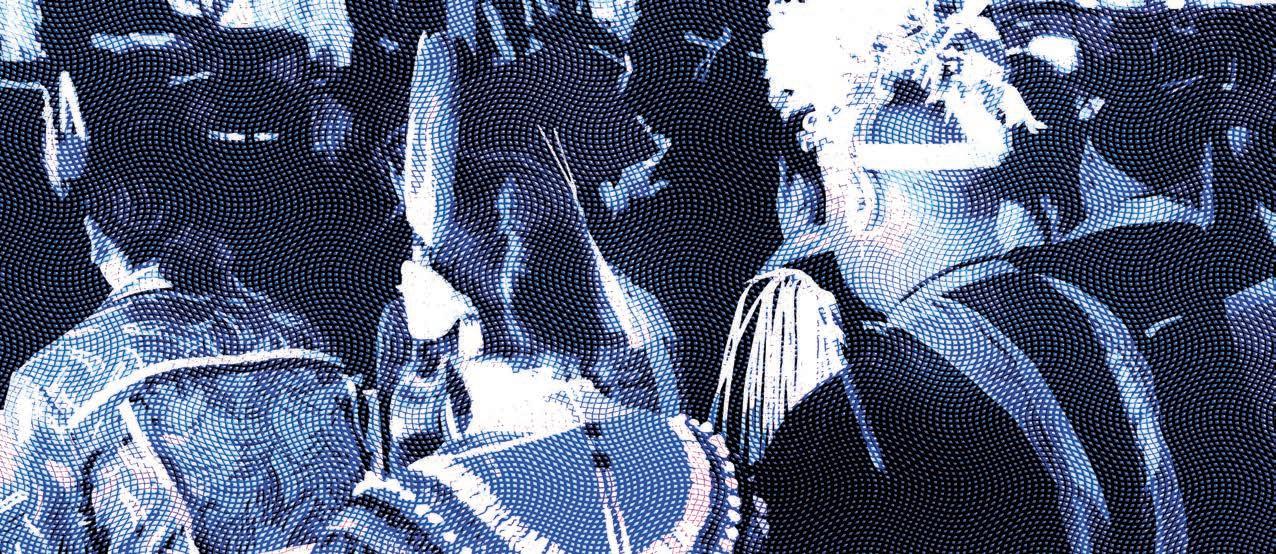
Recommendations
Policy development and resource allocation for AIAN students should be informed by all the systems that interact with these students: federal, state, tribal, institutional, and philanthropic. Where there is limited access to local and state support for Native students, educators and community providers often turn to federal and philanthropic sources to make sure students’ educational needs are met. Federal funding for student success initiatives and program development are limited and often difficult to access. Philanthropy has historically provided limited support for Native education, but today it is a viable collaborator that could help fill the gap in resources needed for AIAN student success.
✓ Ensure Good and Disaggregated Data
Increasing the visibility and representation of AIAN students goes beyond symbolic and physical acts. It occurs when the experiences of Native students are known because there is good data collection, analysis, and dissemination. This requires intentional disaggregation of data and the use of methodologies that account for the unique characteristics, including matriculation, retention, and graduation numbers, of a Native student population.
23
Photo courtesy of the American Indian College Fund © 2024.
✓ Set Goals for Supporting AIAN Students
When focused on strategies intended to increase engagement and improve educational attainment, goals should be set that are aspirational and preferably disruptive so that transformative change in systems can occur.
✓ Respect and Honor Diverse Cultural Identities
Strategies should increase choice, affirm, and honor diverse cultural identities, and create safe places for students to build community. Improving choice means increasing outreach and recruitment activities, ensuring greater financial support for Native students, and investing in pathways that help students select the right institution, matriculate successfully through orientation, and where appropriate, have access to good transfer supports.
Honoring diverse identities means:
• Inclusive curriculum
• Public visibility, including acknowledging the lands upon which institutions reside, and training across the institutions to build shared understanding of historic and contemporary Indigenous experiences
• Safe places are physical and spiritual — locations where Native students can gather, live, study together, and build community is as critical as having a campus climate that is welcoming and relationship-oriented.
✓ Support Success in College
Investment in AIAN pathways to college also includes remediating Native students’ lack of college preparedness by providing resources for robust dual enrollment programs, first-year experiences that include the integration of coursework that prepares students for college-level courses, advising and mentoring strategies, and career education. Because the high school graduation rate can be as low as 50% in areas where there is severe economic and social distress, high school equivalency programs can be a path to college giving AIAN people a second chance.
24
✓ Invest and Ensure Financial Affordability and Stability
Although further study is needed, removal of financial barriers to higher education for AIAN students is paid for through tuition subsidies and waivers,17 more robust scholarship programs, and access to support that addresses basic needs, such as housing, food, childcare, and transportation.18 In a study on college affordability conducted by leading Native scholarship providers, respondents identified financial barriers as a significant problem — for new students who need college to be fully funded with minimal or no debt and for returning students whose desire to complete their education is often hindered by the lack of stable funding. WICHE noted in its report on NASNTIs that the most frequently cited challenges to student success were lack of academic preparedness, financial barriers, and family obligations. Removal of financial barriers can help address academic and family barriers.
A few promising examples include:
• State policies that offer reduced tuition or tuition waivers to members of Indian tribes (see Colorado).
• Pathways to college that higher education leaders report is increasing financial resources that support Native student enrollment and retention (University of California system, University of Wisconsin-Madison).
• Federal support through increases in student financial aid, as well as the establishment of fellowships and professional development programs that fund Native students, especially in areas with a great need for employment, as students head into health and teaching professions.
• Tribal support through investment in community-based educational programs that identify and engage students with college pathways, and increased funding for tribal scholarships.
• Philanthropic support through increased funding for student success programs, organizational capacity such as recruiters, academic and financial aid advisors, Native student centers and tribal liaisons, and public/private partnerships.
25
✓ Strengthen Recruitment and Enrollment of Native Students
Expanded outreach to AIAN students is critical. Because a considerable number of Native students are first-generation college students, there is still a need to engage in robust recruitment. All higher education institutions can improve outreach to and recruitment of students in Native communities. It is most common to engage potential students through high school programming, but for Native people, community events and resources are strategically more likely to be places where connections are made. For institutions located in metropolitan areas, connecting with the Indian education programs in schools with Native student populations, with urban Indian centers, and with community gatherings, such as powwows and athletic events, provides broader access to Native families and encourages trust and openness among institutions and tribes. The success of TCUs and NSNTIs is rooted in cultural connection, as well as in access and affordability.
Increased enrollment of Native students can occur through:
• Institutions recruiting within a geographic region that helps students stay connected to family and cultural responsibilities,
• Institutions expanding recruitment strategies to connect more fully with Native community resources and events.
• Tribes; higher education institutions; nonprofits, such as scholarship organizations; and schools expanding their support for pathways programs that introduce students to college, encouraging them to connect college to career interests, and supporting students with finding the right college for them.
• Clear transfer relationships among community colleges, TCUs, NASNTIs, and state institutions. Often the burden of navigating transfer falls on the student, despite institutions possessing the power and resources to facilitate high impact articulation agreements, transfer orientation, and specific student advising strategies.
• Targeted outreach to adult learners, returning students, and high school equivalency completers to increase Native educational attainment and provide pathways that are underutilized.
26
Conclusion
From the data and recommendations shared in this brief, the need for intervention and investment in Native higher education is critical. The experience of Indigenous people with higher education is complex. Since the founding of colleges in the early days of colonial occupation that were, at least partly, intended to educate Native people, Natives have struggled with finding a path to higher education that is universally accessible and that honors identity and vision. The complexities of Native higher education are fully embedded in the complexities of Native life. Often higher education institutions strive for deeper connections and value with the tribal students and communities they serve, and, in that process, many unrelated aspects of higher education become as critical to Native experience as the classroom or laboratory is to the student. Higher education institutions find themselves embroiled in issues related to land use, especially with land-grant institutions built on lands stolen from tribes, and repatriation, particularly of human remains and cultural objects, which are often housed in the archives and storage rooms of colleges and universities. Addressing these issues can increase restorative and reparative practices that can help Native people reclaim their languages, cultural practices, and traditional knowledge.
To learn more about how to recruit, support, engage and best serve AIAN students, please visit www.collegefund.org

27
Photo courtesy of the American Indian Science and Engineering Society © 2024.
Additional Resources
For more background on the impact of boarding schools on AIAN students, read:
Education Resources - The National Native American Boarding School Healing Coalition
Federal Indian Boarding School Initiative Investigative Report (bia.gov)
Stringing Rosaries: The History, the Unforgivable, and the Healing of Northern Plains American Indian Boarding School Survivors (2021). Denise K. Lajimodiere. North Dakota State University Press.
Boarding School Seasons (2000). Brenda J. Child. University of Nebraska Press.
For more information about American Indian/Alaska Natives in higher education, learn more at:
• The American Indian College Fund
• The Journal of American Indian Education
• Tribal College Journal
To learn about strategies to support American Indian and Alaska Native high school students to graduate, view: Increasing American Indian and Alaska Native High School Graduation Rates by WestEd.
28

Endnotes
1 National Center for Education Statistics. (2024). High School Graduation Rates. Condition of Education. U.S. Department of Education, Institute of Education Sciences. Retrieved from: https://nces.ed.gov/programs/coe/indicator/coi/high-schoolgraduation-rates
2 Postsecondary National Policy Institute. (2023). Native American Students in Higher Education. Retrieved from: https://pnpi. org/factsheets/native-american-students/
3 College Board. (2023). AP National and State Data. AP Central. Retrieved from: https://apcentral.collegeboard.org/aboutap/ap-data-research/national-state-data
4 ACT Center for Equity. (2015). The Condition of College & Career Readiness: American Indian Students. [Report.]
5 National Center for Education Statistics. (2024). Table 306.20. Total fall enrollment in degree-granting postsecondary institutions, by level and control of institution and race/ethnicity or nonresident status of student. Digest of Education Statistics. Retrieved from: https://nces.ed.gov/programs/digest/d23/tables/dt23_306.20.asp; Wood, S. (2022, Aug. 8). Tribal Colleges and Universities: What to Know. US News and World Report. Retrieved from: https://www.usnews.com/education/ articles/tribal-colleges-and-universities-what-to-know
6 Reber, S., Goodman, G., & Nagashima, R. (2023). Admissions at most colleges will be unaffected by Supreme Court ruling on affirmative action. Washington, D.C.: Brookings. Retrieved from: https://www.brookings.edu/articles/admissions-at-mostcolleges-will-be-unaffected-by-supreme-court-ruling-on-affirmative-action/
7 American Indian College Fund. (2023). Whatever It Takes: Creating Pathways for Student Success at Tribal Colleges and Universities. [Report].
8 The Hope Center for College, Community, and Justice. (2020). Tribal Colleges and Universities #RealCollegeSurvey. [Report].
9 National Center for Education Statistics. (2023). “College Enrollment Rates.” Condition of Education. U.S. Department of Education, Institute of Education Sciences. Retrieved January 3, 2024, from https://nces.ed.gov/programs/coe/indicator/ cpb
10 National Center for Education Statistics. (2023). “Undergraduate Enrollment.” Condition of Education. U.S. Department of Education, Institute of Education Sciences. Retrieved January 3, 2024, from https://nces.ed.gov/programs/coe/indicator/ cha.
11 National Congress of American Indians (2023). Condemning the 2023 U.S. Supreme Court Ruling on Affirmative Action in Admissions, Inc. v President and Fellows of Harvard College [NCAI Resolution #NO-23-059]; Tachine, A.R., Cabrera, N.L., and Yellow Bird, E. (2017) “Home Away From Home: Native American Students’ Sense of Belonging During Their First Year in College.” The Journal of Higher Education, V 88, No.5, 785-807
12 US News and World Report (2022, August Tribal Colleges and Universities: What to Know” in US News and World Report, Education. Retrieved from: https://www.usnews.com/education/articles/tribal-colleges-and-universities-what-to-know
13 Shotton, H.J., Lowe, S.C., and Waterman, S.J. (2013; 1st Ed) Beyond the Asterisk: Understanding Native Students in Higher Education. Routledge.
14 American Indian College Fund. (2023). Whatever it takes: Creating pathways for student success at tribal colleges and universities. [Research brief]; Guillory, R., Wolverton, M., (2008). “It’s About Family: Native American Student Persistence in Higher Education.” The Journal of Higher Education, V 79, No. 1, pp 58-87.
15 American Indian College Fund (2019). Creating Visibility and Healthy Learning Environments for Native Americans in Higher Education. [Report]
16 National College Attainment Network. (n.d.). National FAFSA Completion Rates for High School Seniors and Graduates. Retrieved from: https://www.ncan.org/page/NationalFAFSACompletionRatesforHighSchoolSeniorsandGraduates
17 Minthorn, R. Z. & Youngbull, N. R. (2023). National Native tuition study: A report to the Region 16 Comprehensive Center. Region 16 Comprehensive Center.
18 The Hope Center for College Community and Justice. (2020) Tribal Colleges & Universities #RealCollegeSurvey. [Report.]
29
Acknowledgements
This brief was authored by Cheryl Crazy Bull of the American Indian College Fund. The American Indian College Fund and the Campaign for College Opportunity thank the College Fund’s Native higher education equity team, researchers, and student success advocates at the College Fund and TCUs and among the Campaign’s team for their review and thoughtful feedback on this paper. We are grateful to the funders who are supporting this series of briefs, including The Lumina Foundation, The Stuart Foundation, The College Futures Foundation, The Kresge Foundation, The W.K. Kellogg Foundation, Eileen and Harold Brown, The Evelyn and Walter Haas, Jr. Fund, and GPSN.
Please visit our website for more resources to affirm equity, ensure inclusion, and empower action. www.collegecampaign.org

LOS ANGELES OFFICE
1149 S. Hill Street, Ste. 925
Los Angeles, CA 90015
Tel: (213) 744-9434
Fax: (877) 207-3560
Edward C. Bush, Chair
Brooke Armour, Vice Chair
Maria Anguiano, Treasurer
J. Luke Wood, Secretary
SACRAMENTO OFFICE 1512 14th Street
Sacramento, CA 95814
Tel: (916) 443-1681
Fax: (916) 443-1682
BOARD OF DIRECTORS
Estela Mara Bensimon
Lena Carew
Mellissa E. Gallegos
Juan Sánchez Muñoz
Maria Ott
WASHINGTON, D.C. OFFICE
1016 16th Street NW, Suite 100
Washington, D.C. 20036
Tel: (202) 293-2828
Julie Peller
Andy Wong facebook.com/collegecampaign @CollegeOpp
Reshma Shamasunder
Joseph Villela























